Yichen Yang
DynaQuant: Dynamic Mixed-Precision Quantization for Learned Image Compression
Nov 11, 2025Abstract:Prevailing quantization techniques in Learned Image Compression (LIC) typically employ a static, uniform bit-width across all layers, failing to adapt to the highly diverse data distributions and sensitivity characteristics inherent in LIC models. This leads to a suboptimal trade-off between performance and efficiency. In this paper, we introduce DynaQuant, a novel framework for dynamic mixed-precision quantization that operates on two complementary levels. First, we propose content-aware quantization, where learnable scaling and offset parameters dynamically adapt to the statistical variations of latent features. This fine-grained adaptation is trained end-to-end using a novel Distance-aware Gradient Modulator (DGM), which provides a more informative learning signal than the standard Straight-Through Estimator. Second, we introduce a data-driven, dynamic bit-width selector that learns to assign an optimal bit precision to each layer, dynamically reconfiguring the network's precision profile based on the input data. Our fully dynamic approach offers substantial flexibility in balancing rate-distortion (R-D) performance and computational cost. Experiments demonstrate that DynaQuant achieves rd performance comparable to full-precision models while significantly reducing computational and storage requirements, thereby enabling the practical deployment of advanced LIC on diverse hardware platforms.
Low algorithmic delay implementation of convolutional beamformer for online joint source separation and dereverberation
Jun 14, 2024Abstract:Blind-audio-source-separation (BASS) techniques, particularly those with low latency, play an important role in a wide range of real-time systems, e.g., hearing aids, in-car hand-free voice communication, real-time human-machine interaction, etc. Most existing BASS algorithms are deduced to run on batch mode, and therefore large latency is unavoidable. Recently, some online algorithms were developed, which achieve separation on a frame-by-frame basis in the short-time-Fourier-transform (STFT) domain and the latency is significantly reduced as compared to those batch methods. However, the latency with these algorithms may still be too long for many real-time systems to bear. To further reduce latency while achieving good separation performance, we propose in this work to integrate a weighted prediction error (WPE) module into a non-causal sample-truncating-based independent vector analysis (NST-IVA). The resulting algorithm can maintain the algorithmic delay as NST-IVA if the delay with WPE is appropriately controlled while achieving significantly better performance, which is validated by simulations.
Fast Adversarial Training against Textual Adversarial Attacks
Jan 23, 2024Abstract:Many adversarial defense methods have been proposed to enhance the adversarial robustness of natural language processing models. However, most of them introduce additional pre-set linguistic knowledge and assume that the synonym candidates used by attackers are accessible, which is an ideal assumption. We delve into adversarial training in the embedding space and propose a Fast Adversarial Training (FAT) method to improve the model robustness in the synonym-unaware scenario from the perspective of single-step perturbation generation and perturbation initialization. Based on the observation that the adversarial perturbations crafted by single-step and multi-step gradient ascent are similar, FAT uses single-step gradient ascent to craft adversarial examples in the embedding space to expedite the training process. Based on the observation that the perturbations generated on the identical training sample in successive epochs are similar, FAT fully utilizes historical information when initializing the perturbation. Extensive experiments demonstrate that FAT significantly boosts the robustness of BERT models in the synonym-unaware scenario, and outperforms the defense baselines under various attacks with character-level and word-level modifications.
PIAT: Parameter Interpolation based Adversarial Training for Image Classification
Mar 24, 2023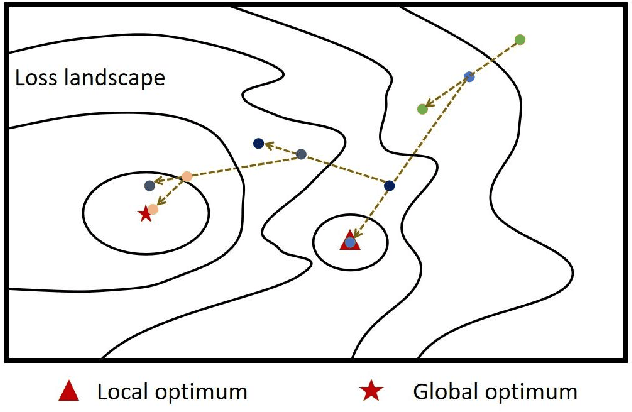
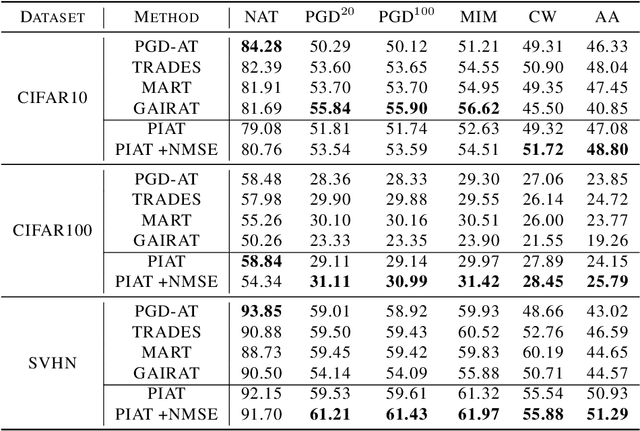
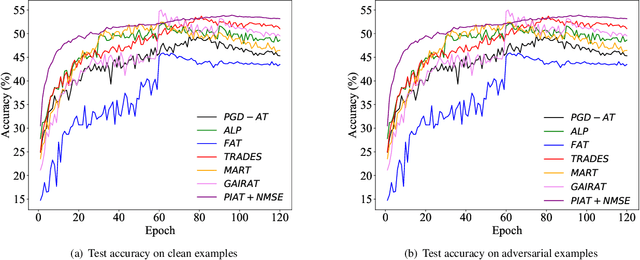
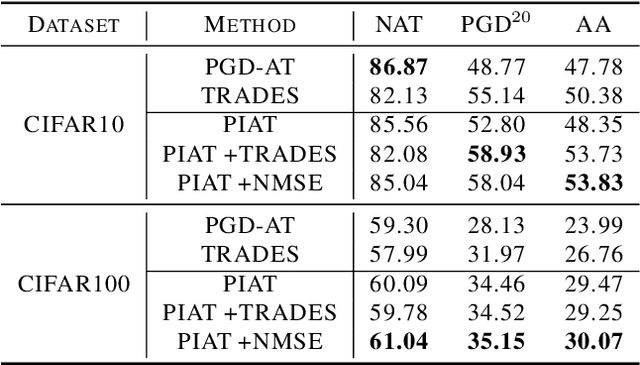
Abstract:Adversarial training has been demonstrated to be the most effective approach to defend against adversarial attacks. However, existing adversarial training methods show apparent oscillations and overfitting issue in the training process, degrading the defense efficacy. In this work, we propose a novel framework, termed Parameter Interpolation based Adversarial Training (PIAT), that makes full use of the historical information during training. Specifically, at the end of each epoch, PIAT tunes the model parameters as the interpolation of the parameters of the previous and current epochs. Besides, we suggest to use the Normalized Mean Square Error (NMSE) to further improve the robustness by aligning the clean and adversarial examples. Compared with other regularization methods, NMSE focuses more on the relative magnitude of the logits rather than the absolute magnitude. Extensive experiments on several benchmark datasets and various networks show that our method could prominently improve the model robustness and reduce the generalization error. Moreover, our framework is general and could further boost the robust accuracy when combined with other adversarial training methods.
Robust Textual Embedding against Word-level Adversarial Attacks
Feb 28, 2022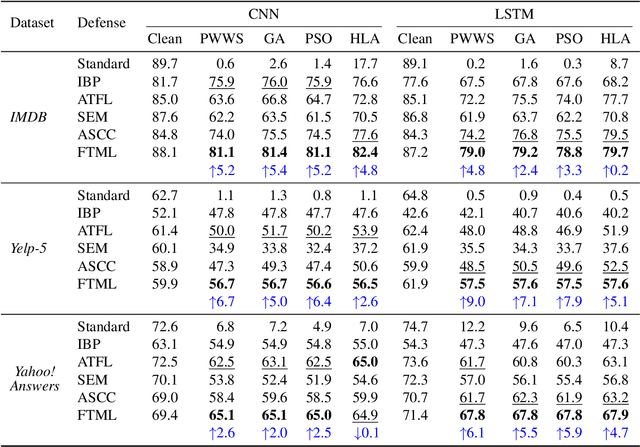
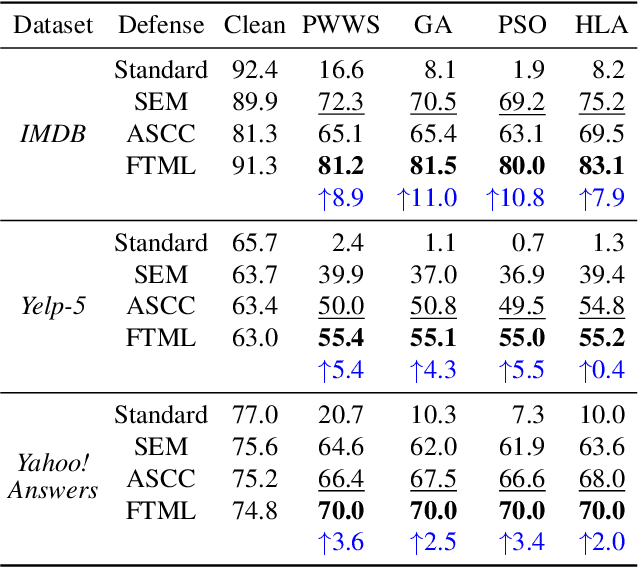
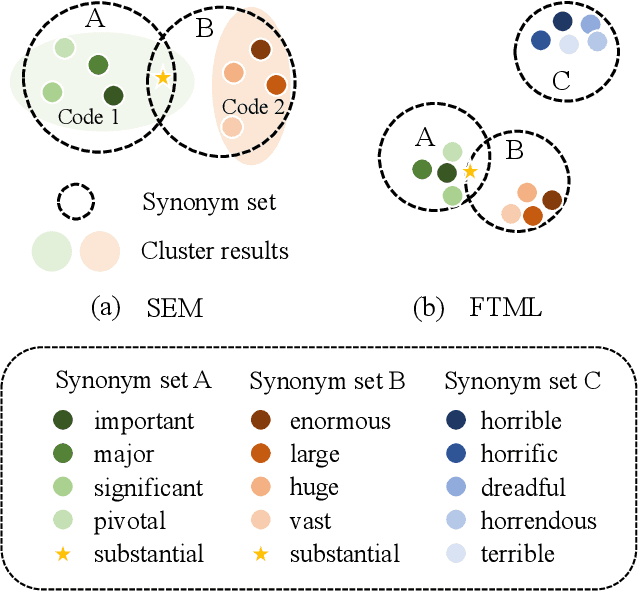

Abstract:We attribute the vulnerability of natural language processing models to the fact that similar inputs are converted to dissimilar representations in the embedding space, leading to inconsistent outputs, and propose a novel robust training method, termed Fast Triplet Metric Learning (FTML). Specifically, we argue that the original sample should have similar representation with its adversarial counterparts and distinguish its representation from other samples for better robustness. To this end, we adopt the triplet metric learning into the standard training to pull the words closer to their positive samples (i.e., synonyms) and push away their negative samples (i.e., non-synonyms) in the embedding space. Extensive experiments demonstrate that FTML can significantly promote the model robustness against various advanced adversarial attacks while keeping competitive classification accuracy on original samples. Besides, our method is efficient as it only needs to adjust the embedding and introduces very little overhead on the standard training. Our work shows the great potential of improving the textual robustness through robust word embedding.
Regional Adversarial Training for Better Robust Generalization
Sep 04, 2021
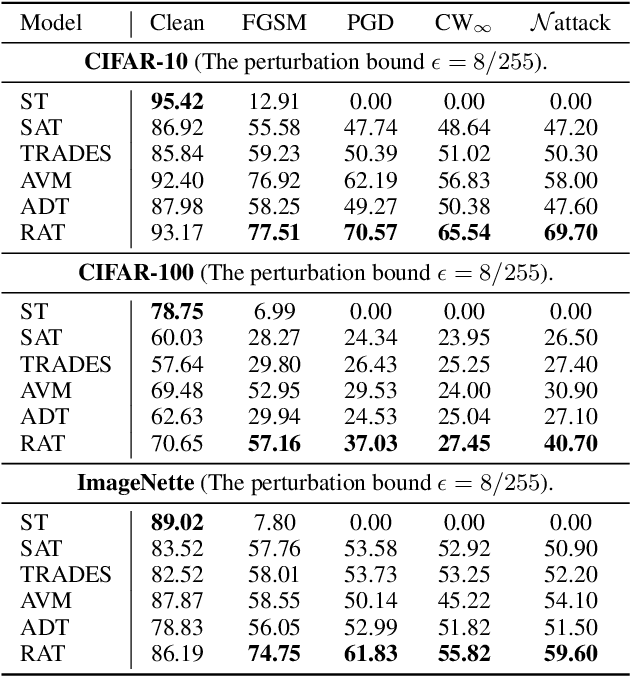
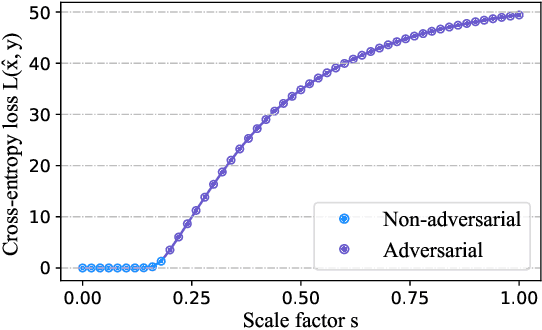
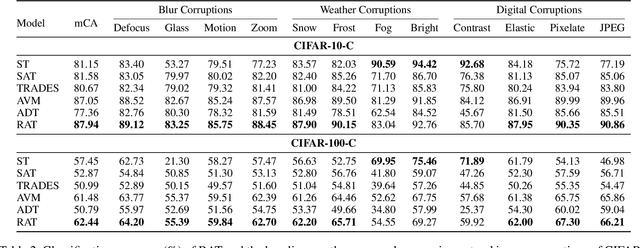
Abstract:Adversarial training (AT) has been demonstrated as one of the most promising defense methods against various adversarial attacks. To our knowledge, existing AT-based methods usually train with the locally most adversarial perturbed points and treat all the perturbed points equally, which may lead to considerably weaker adversarial robust generalization on test data. In this work, we introduce a new adversarial training framework that considers the diversity as well as characteristics of the perturbed points in the vicinity of benign samples. To realize the framework, we propose a Regional Adversarial Training (RAT) defense method that first utilizes the attack path generated by the typical iterative attack method of projected gradient descent (PGD), and constructs an adversarial region based on the attack path. Then, RAT samples diverse perturbed training points efficiently inside this region, and utilizes a distance-aware label smoothing mechanism to capture our intuition that perturbed points at different locations should have different impact on the model performance. Extensive experiments on several benchmark datasets show that RAT consistently makes significant improvement on standard adversarial training (SAT), and exhibits better robust generalization.
Program Synthesis Guided Reinforcement Learning
Feb 22, 2021


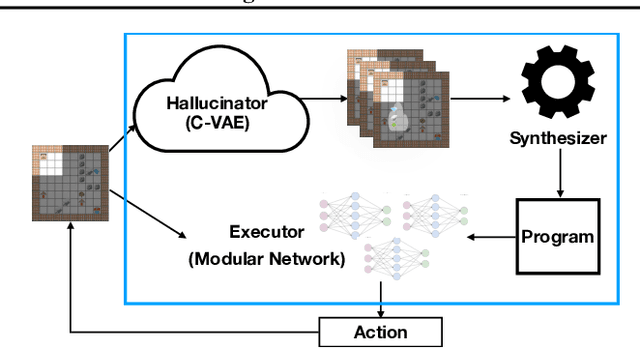
Abstract:A key challenge for reinforcement learning is solving long-horizon planning and control problems. Recent work has proposed leveraging programs to help guide the learning algorithm in these settings. However, these approaches impose a high manual burden on the user since they must provide a guiding program for every new task they seek to achieve. We propose an approach that leverages program synthesis to automatically generate the guiding program. A key challenge is how to handle partially observable environments. We propose model predictive program synthesis, which trains a generative model to predict the unobserved portions of the world, and then synthesizes a program based on samples from this model in a way that is robust to its uncertainty. We evaluate our approach on a set of challenging benchmarks, including a 2D Minecraft-inspired ``craft'' environment where the agent must perform a complex sequence of subtasks to achieve its goal, a box-world environment that requires abstract reasoning, and a variant of the craft environment where the agent is a MuJoCo Ant. Our approach significantly outperforms several baselines, and performs essentially as well as an oracle that is given an effective program.
Neurosymbolic Transformers for Multi-Agent Communication
Jan 05, 2021



Abstract:We study the problem of inferring communication structures that can solve cooperative multi-agent planning problems while minimizing the amount of communication. We quantify the amount of communication as the maximum degree of the communication graph; this metric captures settings where agents have limited bandwidth. Minimizing communication is challenging due to the combinatorial nature of both the decision space and the objective; for instance, we cannot solve this problem by training neural networks using gradient descent. We propose a novel algorithm that synthesizes a control policy that combines a programmatic communication policy used to generate the communication graph with a transformer policy network used to choose actions. Our algorithm first trains the transformer policy, which implicitly generates a "soft" communication graph; then, it synthesizes a programmatic communication policy that "hardens" this graph, forming a neurosymbolic transformer. Our experiments demonstrate how our approach can synthesize policies that generate low-degree communication graphs while maintaining near-optimal performance.
Equality Saturation for Tensor Graph Superoptimization
Jan 05, 2021Abstract:One of the major optimizations employed in deep learning frameworks is graph rewriting. Production frameworks rely on heuristics to decide if rewrite rules should be applied and in which order. Prior research has shown that one can discover more optimal tensor computation graphs if we search for a better sequence of substitutions instead of relying on heuristics. However, we observe that existing approaches for tensor graph superoptimization both in production and research frameworks apply substitutions in a sequential manner. Such sequential search methods are sensitive to the order in which the substitutions are applied and often only explore a small fragment of the exponential space of equivalent graphs. This paper presents a novel technique for tensor graph superoptimization that employs equality saturation to apply all possible substitutions at once. We show that our approach can find optimized graphs with up to 16% speedup over state-of-the-art, while spending on average 48x less time optimizing.
Adversarial Training with Fast Gradient Projection Method against Synonym Substitution based Text Attacks
Sep 14, 2020



Abstract:Adversarial training is the most empirically successful approach in improving the robustness of deep neural networks for image classification. For text classification, however, existing synonym substitution based adversarial attacks are effective but not efficient to be incorporated into practical text adversarial training. Gradient-based attacks, which are very efficient for images, are hard to be implemented for synonym substitution based text attacks due to the lexical, grammatical and semantic constraints and the discrete text input space. Thereby, we propose a fast text adversarial attack method called Fast Gradient Projection Method (FGPM) based on synonym substitution, which is about 20 times faster than existing text attack methods and could achieve similar attack performance. We then incorporate FGPM with adversarial training and propose a text defense method called Adversarial Training with FGPM enhanced by Logit pairing (ATFL). Experiments show that ATFL could significantly improve the model robustness and block the transferability of adversarial examples.
 Add to Chrome
Add to Chrome Add to Firefox
Add to Firefox Add to Edge
Add to Edge